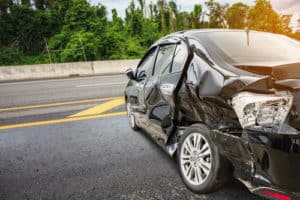
Not very many years ago, the most high-tech, advanced safety features in new cars could be found only on the most high-end, luxury brands. This is no longer the case.
In 2019, some of the most helpful safety technology can be found on even the most basic models. Many of these features improve safety so much that they are becoming standard across the board.
The following are the Top 10 safety features, in no particular order, to look for when shopping for a new car in 2019:
- Automatic emergency braking – This technology automatically applies the brakes if it senses an impending collision to either avoid the crash entirely or reduce the collision’s impact. Some data has shown that cars equipped with this technology experience 50% fewer rear-end collisions.
- Forward-collision warning – If the car senses an impending collision, it will alert the driver using visual or audio signals.
- Blind-spot warning – This technology will provide a visual or audio warning whenever there is a vehicle in your blind spot. It may also include an extra warning if your turn signal is on. Some blind-spot monitoring systems even use a camera to show you exactly what is in your blind spot.
- Rear cross-traffic warning – This system may give you an audio, visual, or haptic (physical sensation) warning if a vehicle moves into the area behind your vehicle.
- Rear automatic emergency braking – With this technology, your brakes will be automatically applied if you are in danger or reversing into an object behind you.
- Lane assist – Different lane assist technologies provide different levels of help. Lane-departure warnings will sense when your vehicle crosses stripes on the road and give you an audio, visual, or haptic signal to warn you that you are veering from your lane. Lane-keeping assist will automatically correct your steering or braking when it senses you crossing a lane marking. Lane-centering assist will continuously assist your steering to help you stay in your lane.
- Adaptive cruise control – While traditional cruise control maintains a constant speed, adaptive cruise control uses cameras, lasers, or radar to maintain a constant distance between your vehicle and the vehicle in front of you, to ensure you are keeping a safe following distance. This system will accelerate, decelerate, and brake for you, so all you have to do is steer. It can even tighten the seatbelts if it senses an impending collision.
- Rear-view camera – A camera with a wide-angle lens mounted in the back of your vehicle can give up to a 180-degree view behind your vehicle. This can ensure you don’t hit other cars, pedestrians, or objects when backing up.
- Adaptive headlights – These headlights can improve visibility on curvy roads and sharp turns by pivoting in the direction you are traveling. Some new headlights also feature adaptive high-beam assist and night view to enhance visibility in the dark.
- Safety exit assist – This technology prevents doors from being opened when the vehicle senses bicycles and other vehicles approaching from behind. This prevents “dooring” accidents and can ensure children don’t step out of cars into the path of oncoming traffic.
Though these safety features can go a long way toward improving safety on the road, it is crucial that you still stay vigilant while driving. Accidents can again happen even with all of these technologies installed and may be more likely if a driver uses them as an excuse not to pay attention.
NEW VEHICLE DRIVERS– things to know about your new vehicle and the features and technology it may be containing.
Contact Us
If you are injured in a car accident in Virginia Beach or surrounding areas, the law office of Ruloff, Swain, Haddad, Morecock, Talbert & Woodward, P.C. can help. We have been assisting accident victims across Tidewater Virginia for more than 30 years and have won millions for our clients in that time.
To learn more about how we can help you seek compensation for your injuries and expenses after an accident, contact us today by phone or online to schedule a free consultation.
